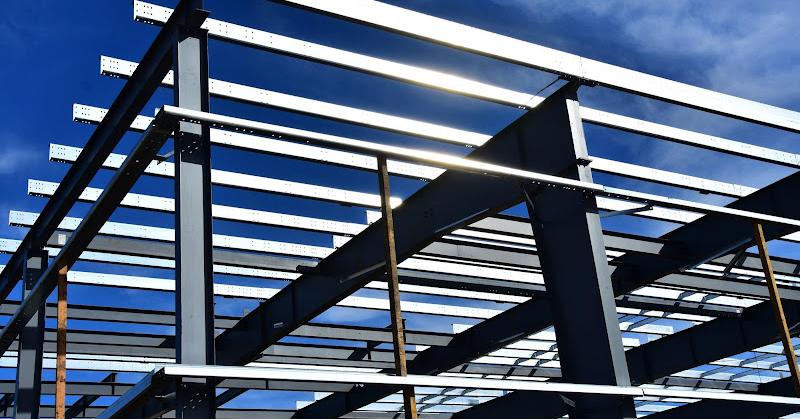If you’re adding a new structure or building to your property, choosing the highest quality parts is important. When it comes to metal building parts, it’s vital to look for the best quality available.
According to statistics, metal building construction increased to almost 13 percent in 2021.
This guide will explain the parts of a metal building you need to know and how to choose quality parts for the best results.
Start with Steel
When you’re planning your metal building parts diagram, it’s important to consider the type of metal you’ll use. Steel far and away outlasts other types of metal, and it’s been used to build metal buildings for decades.
Not only is steel extremely strong, but it’s one of the most recycled materials on the planet. It can withstand weather, wind, and pressure like no other metal.
Steel is naturally resistant to things like rust and corrosion. You can use it for the wall panels, roof, and trim without having to worry about how it looks years from now.
Remember the gauge of the steel you use. 26 gauge steel is considered the industry standard and is almost always used for strong, reliable metal building construction.
A Note on Metal Building Frame Types
Metal framed buildings come in several types and shapes, including:
- Gable clear-span which offers a wide, open design
- Gable modular rigid provides more support for larger metal buildings
- Single slope works for additions and for sloped roofs
- Lean-to frames are supported by an adjoining building
- Tapered beam buildings work well for structures with large, open spaces
Beams for Metal Buildings
The parts of a metal building are somewhat similar to a traditional building, but they do require different sizes and styles. As for the beams, you’ll want to include end wall columns at each end of the building. These beams support the end walls and may even support the entire building as a whole.
Rafters are also extremely important since they support the roof. These metal building parts are found at either end of the building and sometimes in the middle depending on the size of the building and how much weight the roof must support.
End wall girts are parts that are bolted to the end wall columns. These beams add more support for the end walls, and they are located where you screw the end wall panels in.
Metal Building Parts: Wall Panels
Your metal building will likely be built on a concrete foundation. The wall panels will add strength, protection, and style to the finished product.
Look for high-quality names like Butler wall panels to complete your project. These strong, sturdy panels come in a wide range of styles, sizes, thicknesses, and more.
Butler’s line of “Shadowall” panels hides screws and fasteners to create a seamless look. This option is excellent if you’re adding a metal building to your home or want it to look as professional and modern as possible.
Butlerib II panels are punched at the base and eave. You can buy them with mitered ribs along the top that fit right into the rib of the roof panels. This ensures a secure fit without additional hardware required.
Wall panels are just as important as a metal building frame. Always choose the highest quality possible to ensure longevity and an attractive aesthetic in any environment.
Metal Building Trim
When you visit your local metal building parts supply provider, make sure you’re aware of the different options for trim. A peak sheet or ridge roll is located at the peak of the building. This trim seals the joint where the roof panels come together.
Rake trim is found at both ends of the building. It seals the joint where the roof meets the walls on both ends of the metal building.
Remember to add corner trim for a nice finishing touch. This trim is located at all corners and seals the end wall and sidewall joints.
Eave trim works for metal buildings where the roof panels are flush with the sidewalls. This type of trim is added to seal that specific joint and make everything tight.
Don’t forget to add some gutters if your building requires eave trim. The gutters seal the joints and they also move rainwater off the roof and away from your building and its foundation.
Screws
Of course, most metal building parts are held together with screws. When you’re attaching metal-to-metal, carbon steel self-drilling screws are recommended.
Look for screws with tapered compression points and a flat-top design. Combine these with hex-cut washer heads to create a tight, secure seal.
Choose fasteners made of zinc alloy to prevent rust. These fasteners are particularly useful if you live in a humid or coastal area where moisture can cause rust and corrosion.
If you’re attaching metal to wood, use wood grip screws. These fasteners work with metal panels and they tap right into the wood underneath.
When it comes to aesthetics, choose low-profile fasteners. These fasteners have a sleek, aerodynamic design that looks more pleasing than a standard hex-head screw.
Find Your Parts Today
When you choose quality metal building parts, you’ll enjoy a reliable structure that will last a lifetime. Remember to decide which metal building frame type you want and select your beams, panels, trim, and hardware accordingly for the best results.
For more great articles about business, tech, finance, and much more, check out the rest of our website today!

